Since so many of us are staying indoors more at the moment, I’ve had a lot of people ask me whether they still need to wear sunscreen inside. And I personally haven’t been wearing sunscreen indoors, even as a sunscreen nerd who owns all of the sunscreens.

So do you need to wear sunscreen indoors? The truth is… it depends. “Indoors” spans a huge range of situations: from a windowless basement, to sitting under a whisper of netting in the summer sun. I’m going to break down the factors that affect whether or not you need to wear sunscreen indoors from a scientific perspective, so you can
Here’s the video on YouTube (I highly recommend watching the video since the topic’s quite complex, but also my editor did a great job on cutaways… and the sunscreen in my eyes stung for 10 minutes so it would be great to maximise the mileage of my pain). Scroll down for the blog post!
Why wear sunscreen?
First, let’s quickly run through why we wear sunscreen.
Sunscreen’s main job is to cut down how much UV reaches your skin.
Sunscreens have an SPF rating which mostly measures how much UVB the sunscreen protects you from. These shorter wavelengths generally cause you to burn (erythema), and they’re the wavelengths most strongly associated with skin cancer (basal and squamous cell carcinomas, and melanoma). They don’t go as deep into the skin, but they do still cause your skin to age faster.
Related post: What Does SPF Mean? The Science of Sunscreen
There’s also UVA, which are longer wavelengths of UV. These burn less, but they cause more prolonged tanning. They contribute to the development of melanoma, skin aging and hyperpigmentation.
The broad spectrum rating on a sunscreen, or the UVA rating (PPD, PA or Boots star rating) shows you how effective a sunscreen is at protecting against UVA.
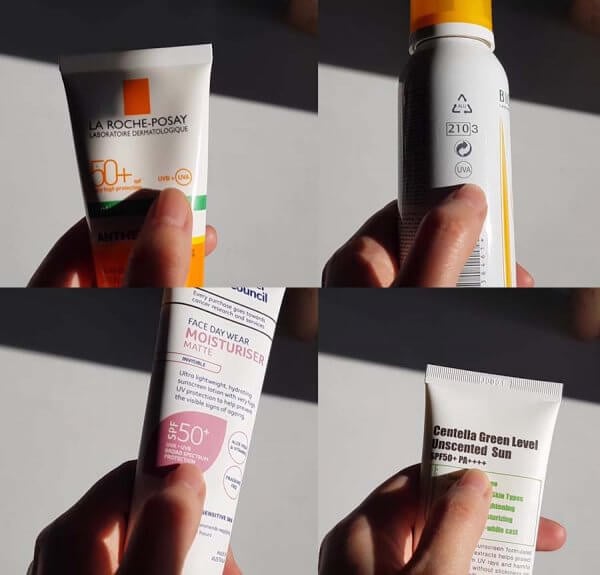
Related post: Why you should protect your skin from UVA (and how) (with video)
One of the problems with this is that most of the studies on the risks of UV have been done on people with white skin – we’ll come back to this point later.
(Some people have also asked about the light from screens, especially blue light. Sunscreen will not protect you against blue light, not even mineral sunscreen filters (unless there are special additives, which isn’t the case for the vast majority of sunscreens). Your screens also don’t produce anywhere near enough blue light to make much of a difference – check out my posts on visible light protection and blue light damage from screens for more information.)
To work out if you need sunscreen, there are two factors that need to be considered: how much UV you’re exposed to, and how susceptible your skin is to UV damage.
How much UV is indoors?
There are two ways you can be exposed to UV:
Direct exposure is when the sun is shining on you. In full sun you’re getting direct exposure, in the shade you have no direct exposure.
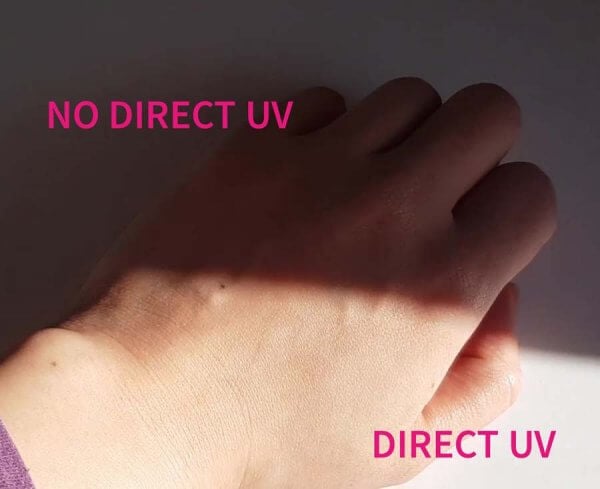
Diffuse exposure is when the sun’s UV is bounced onto you – mostly by air molecules high up in the sky, but also by objects around you. (This also happens with visible light, and it’s why you can still see things that are in the shade.)
Shorter wavelengths get diffused more, so there’s more diffuse UV around than diffuse visible light.
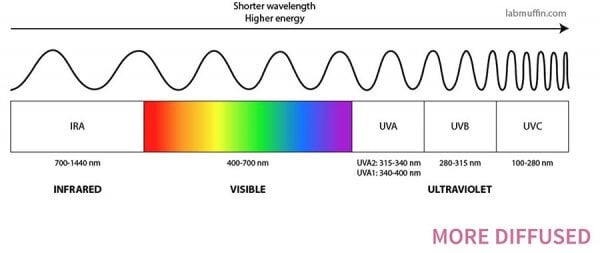
Obviously there’s more UV (both direct and diffuse) outside; when you’re indoors, there are things between you and the sun and sky. In the shade, solid walls and roofs block out direct UV, but you can still get diffuse UV.
How much diffuse UV is indoors?
It’s easy to work out how much direct UV you’re getting based on whether you’re in the shade or not. But how can you estimate the amount of diffuse UV?
This is actually quite tricky. Lots of different factors that contribute to the ratio between direct and diffuse UV – wavelength of UV, height of the sun, altitude – there are some very detailed and dense papers on each of these factors.
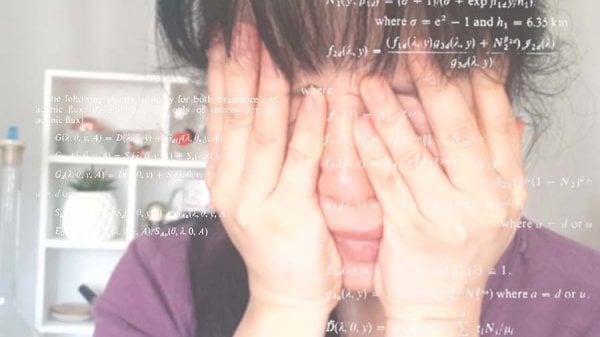
I’m using 60% diffuse UV and 40% direct UV in the open as a rough estimate (based on a range of empirical studies).
To estimate how much diffuse UV you’re getting in any particular location, we can use a concept called sky view. The amount of diffuse UV you’re getting is proportional to your sky view – how much sky you’re exposed to (this is called the sky view factor model).
If you’re standing in the middle of a field, you’re exposed to the inside of a dome of sky. This is 100% sky view, which is 100% exposure to diffuse UV.
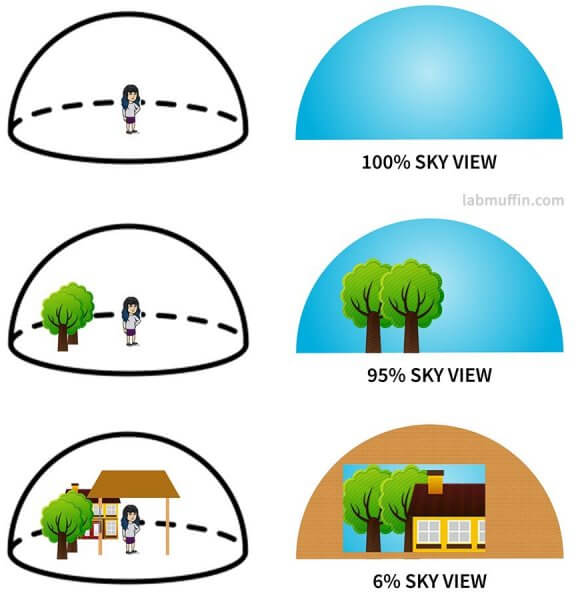
If there’s stuff blocking your view of the sky – trees, buildings, walls – then you get less sky view and lower diffuse UV.
Inside a typical room, your exposure to the sky will be through windows and doors. That’s why distance from doors and windows matters.
For example, in my room, I have a 1.6 x 1.2 m window. To work out my sky view through that window, there’s… complicated maths involved, so I used some rough approximations to estimate my sky view.1
If you’re basically sitting in the window and there’s nothing outside your window but the sky, you’re getting 50% sky view, so you’re receiving roughly half of the diffuse component of UV.2
If you’re further back from the window, then the portion of your dome that’s sky is smaller – this decreases exponentially as you move away from the window.
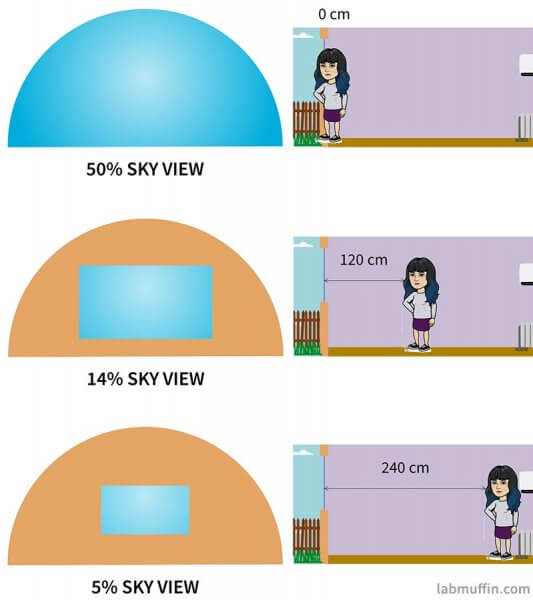
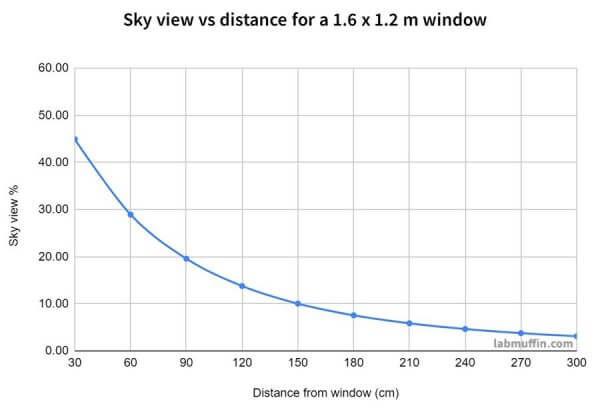
For example, I sit around 3 metres from the window in my room. This means I get no direct UV, and up to about 3% of the diffuse UV from the sky through the window.
But I also have stuff (trees, houses, blinds) blocking out parts of the sky:
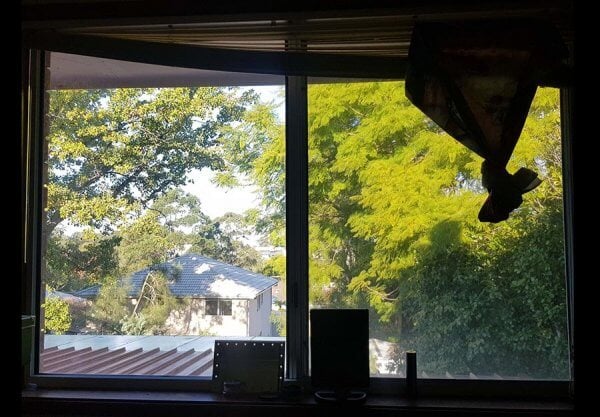
So only about 11% of the sky in the window is actually visible (as a generous overestimate; the UV reflected by the objects outside the window is usually less than 10%, so the overestimate covers it).
That gives me 0.33% sky view – which means I’m getting one 300th of the diffuse UV compared to being in the open, and one 500th of the total UV compared to being in the open.3

Even if I was only one metre away from the window that’s less than 2% sky view – with no direct UV, I’m getting about 1% of the amount of UV compared to being in the open.
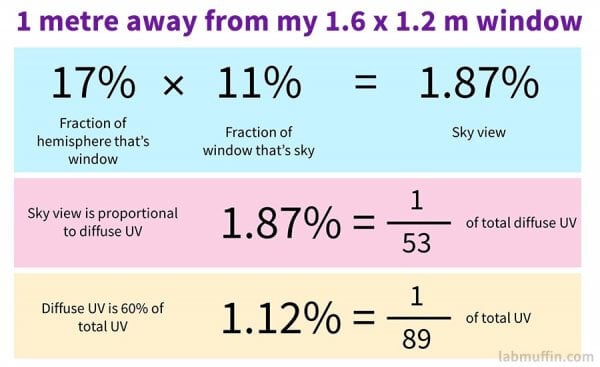
1 Unfortunately my friends with advanced maths degrees were too busy to help me out with this (one was working on graduating and the other was doing firefighter training, so it was hard to argue). Since the window is around head height, I figured it was acceptable to approximate the dome portion using the chord lengths as the sides of a rectangle on the dome. The further away from the window, the more accurate the approximation is, but this whole exercise is rough anyway so simply not being orders of magnitude out is OK… I think?
2 This is an average, but since we really only care about facial skin, your orientation to the window makes a massive difference. Different regions of your face (ear, nose) have different exposure to the sky through your window, and it’s pretty much impossible to take into account. Again, another rough estimation: if you’re facing away from the window you’re getting essentially none of the diffuse UV in the middle of your face, and if you’re facing directly towards the window you’re getting double the estimated sky view’s worth of diffuse UV.
3 This can be loosely interpreted as having SPF/UVAPF 500, but again this is an average – see footnote 2.
But there’s usually also another thing between us and the sun when we’re indoors…
UV through glass
If your windows are closed, that means there’s also glass between you and the sun. Normal window glass blocks almost all UVB from getting through, but blocks only about a quarter to a third of UVA.
So in my particular situation, I’m going to get none of the UVB, and only 1/670th of the UVA compared to sitting outside in the open (assuming 1/4 of UVA is blocked).
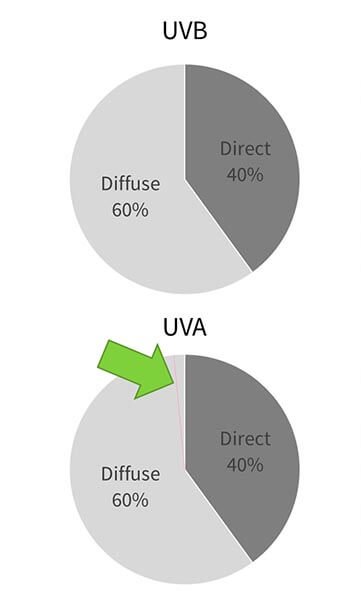
But the amount of UV you get sitting out in the open also changes…
UV varies a lot
UV levels depend on where you live, the time of day and the time of year.
You might have heard of the UV Index, which tells you how much erythemal or sunburn-causing UV you’re getting at a particular time. The UV Index is the best way to work out the UV in your area, and you can generally look this up online – for example, Sydney in the middle of summer has a peak of around 12, in the middle of winter it’s around 2:
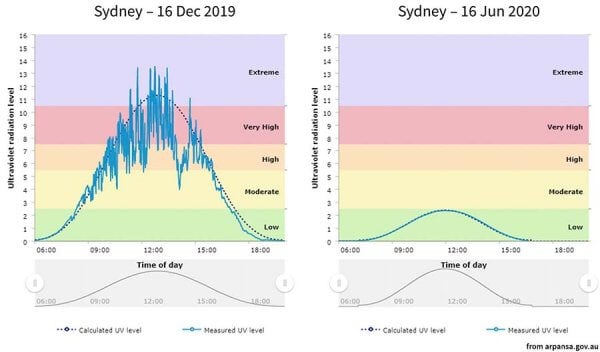
You can use the UV Index to approximate UVA levels as well.
There’s a myth that UVA levels don’t change throughout the year, or throughout the day – they do, just not quite as much as UVB does. Just like UVB (blue), UVA still peaks around the middle of the day and during summer (red):

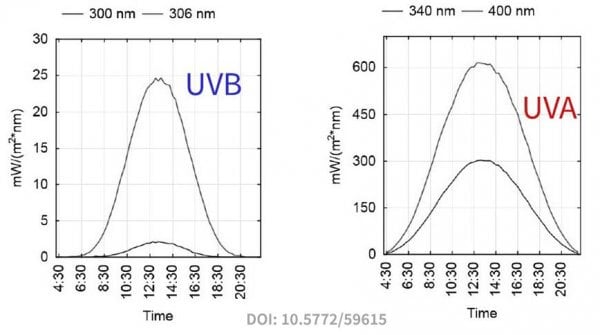
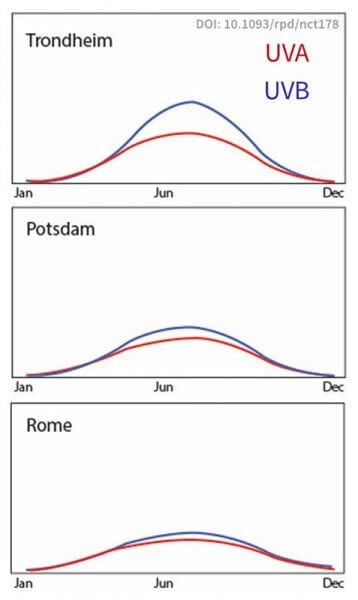
So once you roughly know how much UV you’re getting based on the UV index, sun vs shade, sky view and the presence of glass (phew!), you can decide whether or not it’s worth wearing sunscreen for you.
How susceptible are you to UV damage?
Sunscreen every day no matter what?
Not everyone needs to wear sunscreen every day. I know it’s a common saying in skincare circles that the sun is a deadly laser and you must slather up with sunscreen every day with no exceptions, but this doesn’t accurately reflect the latest scientific consensus in many countries.
There are benefits to UV exposure, which I talked about in my SPF myths video: our body produces vitamin D after UVB exposure, and nitric oxide in response to UVA exposure.
Related post: Top 7 Sunscreen Myths (Video)
So in many countries – including the UK and Australia, the skin cancer capital of the world – health authorities actually don’t recommend that you wear sunscreen every day even if you go outside.
The Australian guidelines (from the Australian and New Zealand Bone and Mineral Society, the Australasian College of Dermatologists, Cancer Council Australia, Endocrine Society of Australia and Osteoporosis Australia) base this on the UV Index:
- If the UV index reaches a maximum of 3 or above you should wear sunscreen.
- If not, it’s recommended that you don’t wear sunscreen, and intentionally get some sun exposure on uncovered skin (yes, seriously).
Related post: Sun Protection and Vitamin D Deficiency
You don’t get much UVB through glass so the benefits of vitamin D won’t be there, but the point is this – it isn’t a blanket rule that everyone needs to wear sunscreen if they get any sun exposure.
Skin tone
There’s also a racial bias in sunscreen studies. Like in pretty much every other area of health, the vast majority of studies have been performed on white people.
Skin tone makes a massive difference when it comes to the risks of sun exposure. Different skin tones are aged differently by the sun, and the link between sun exposure and melanoma in dark skin is not well supported by the research.
This mostly comes down to melanin. Melanin is skin pigment, and it acts as a natural sunscreen – not really enough to for people with darker skin to confidently run around without sunscreen on the beach for hours, but certainly enough to make a big difference with incidental exposure. So the benefits of wearing sunscreen for cancer prevention and aging are going to be lower for people with darker skin.
On the flip side, UVA does tend to cause more uneven pigmentation issues in darker skin. This is more of an aesthetic thing than a health issue, so whether you need to protect your skin from the UVA you’re getting depends mostly on how much you care about pigmentation issues.
Related post: Video: My Routine for Fading Acne Marks (Post-Inflammatory Hyperpigmentation)
Skincare products
You might be using skincare that increases sun sensitivity. AHA exfoliants, for example, will increase how susceptible your skin is to UV damage.
Related post: Do I need extra sunscreen when using chemical exfoliants?
Specific health conditions
You might also have a special condition that means you need to care more about UV exposure – a photosensitive disease or a family history of skin cancer will influence your choice.
Drawbacks of sunscreen
There are definitely some downsides to sunscreen that need to be considered when weighing up whether or not to wear sunscreen.
The obvious one is cost – you have to buy and use sunscreen. You also have to spend time and effort applying it. In a lot of people, sunscreens can cause clogged pores. There’s also problems like irritation, allergy, eye watering.
There are also some potential long-term health concerns about wearing sunscreen. These concerns are usually really small if you’re going outside – the benefits of wearing sunscreen will generally hugely outweigh the potential risks. But if you’re exposed to only a tiny amount of UV then these risks, combined with the other drawbacks of sunscreen, might tip the scales to not wearing sunscreen.
Related post: Sunscreens in your blood??! That FDA study
What’s the real impact of indoor UV exposure?
While all these factors are important in accurately considering the real impact of sunscreen, it’s all still unfortunately pretty vague and abstract to think about. But luckily there’s actually a really well-known example that illustrates the impact of some different types of indoor UV exposure: it’s this well-known photo of a truck driver who drove for 28 years with the windows closed.
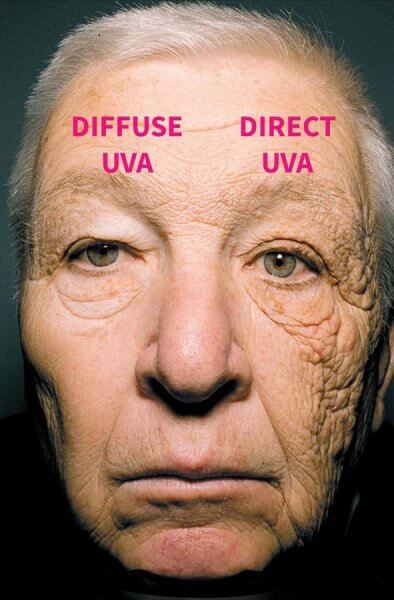
Sun struck his left side (our right side) directly, but he only got diffuse UV exposure on the other side, through the side windows that filter UV similarly to window glass. There’s a huge difference between the two sides.
I think it goes to show that direct UV is probably worth worrying about, but whether you need to protect against diffuse UVA through glass really depends on your specific situation.
References
Wang SQ & Lim HW (eds), Principles and Practice of Photoprotection, 2016. DOI: 10.1007/978-3-319-29382-0 This book covers pretty much everything about sun protection
Diffey B, Sun Protection: A Risk Management Approach, 2017. Really fantastic comprehensive book about sun from one of the pioneers in the field (although it would’ve been nice to have more references)
Schippnick PF & Green AE, Analytical characterization of spectral actinic flux and spectral irradiance in the middle ultraviolet, Photochem Photobiol 1982, 35, 89-101. DOI: 10.1111/j.1751-1097.1982.tb03815.x WARNING: DENSE AND MATHSY
Utrillas MP et al., Ultraviolet radiation protection by a beach umbrella, Photochem Photobiol 2010, 86, 449-456. DOI: 10.1111/j.1751-1097.2009.00677.x Explains the sky view factor model
Almutawa F et al., Current status of photoprotection by window glass, automobile glass, window films, and sunglasses (open access), Photodermatol Photoimmunol Photomed 2013, 29, 65-72. DOI: 10.1111/phpp.12022
Vashi NA et al., Aging differences in ethnic skin (open access), J Clin Aesthet Dermatol 2016, 9, 31-38.
Adamson AS, Sunscreen wouldn’t have saved Bob Marley from melanoma, and it won’t help other dark-skinned people, The Conversation, 14 May 2019.
Gordon JR & Brieva JC, Images in clinical medicine: unilateral dermatoheliosis, N Engl J Med 2012, 366, e25. DOI: 10.1056/NEJMicm1104059
Mac-Mary S et al. Assessment of cumulative exposure to UVA through the study of asymmetrical facial skin aging (open access), Clin Interv Aging 2010, 5, 277-284. DOI: 10.2147/CIA.S13044 More case studies on asymmetric indoor sun exposure


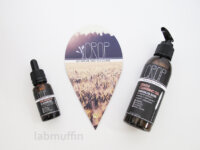
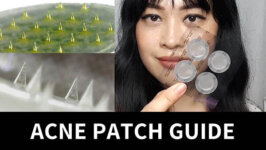
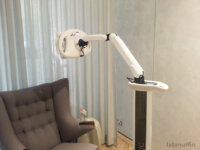
This was such a great article! Oh, and I totally believed that UVA doesn’t change throughout the year/ day; why does everyone say that!?? I’ve heard that tretinoin increasing sun sensitivity is also a myth and that in fact it can have a protective effect in the long term. Could you touch on that (maybe in a future article)? xx
UVA does vary across the year/day but one thing that is often overlooked is the UV measuring device. These are often essentially a flat sensor aimed directly ‘up’ so as the angle of the sun decreases to it the sensor records less UV (plus a little UVA get’s blocked as the radiation has to pass through a longer section of ozone to get to us compared to when directly above us). But our faces are curved! So at 6 pm on a Summer’s day our cheeks and nose can be directly facing the sun. There’s very limited studies that have used a globe measuring device, these show very little variation in UVA across daylight hours on a particular day.
The Estonia study used a hemispheric Kipp & Zonen broadband UVA sensor, this one does too: https://www.researchgate.net/publication/312552479_Analysis_Global_and_Ultraviolet_Radiation_in_Baghdad_City_Iraq
I think it’s just that UVA varies less than UVB (e.g. UVB goes up about 8 times between 8:30 and midday while UVA only doubles), and that slowly morphed into “UVA doesn’t vary”.
Atmospheric scientist here. The sun angle changes throughout the day/year, so UV (both UVA and UVB) change throughout the day/year. At lower sun angles, there is more atmosphere for the UV to be absorbed and scattered. At 7PM the sun angle is much lower than at Noon so you are by default going to have less UVA hitting you. If it was constant throughout the day, the graph would be a rectangle with it being zero at night with a spike up at sunrise and a spike down at sunset and a horizontal line in between.
I do wear it everyday, even if I’m staying in, but I’m super pale and am always using AHA/retinol AND I like to sit right in the window because I’m a lizard. Thank you as always for putting in so much work and doing so much maths. Gonna watch the video now after seeing the teaser on ig 😉
Makes perfect sense. Thanks, Michelle, for discussing all of the variables!
I put mine on every morning regardless of my plans for the day (though the SPF level I use varies depending on time of year), but you’ve given me some things to think about. I guess the main reason I automatically apply sunscreen is that I don’t always know exactly how much I will be outside or near windows that day and I know I will forget or not have time to stop and put it on if plans change.
As a healthcare worker that has to be wearing a mask all day, is it worth wearing sunscreen where the mask sits on my face? My sunscreen rubs off, but I work next to huge untinted windows – so is there even any point wearing sunscreen under the mask?
It really depends on the mask fabric – I’d treat it like clothing, if the weave is loose then it won’t block out much UV. Also be careful at the edges where the mask might move, that could definitely lead to some weird tan lines!
Michelle, thanks for replying! Then how should I reapply sunscreen when I’m always having to wear a mask? Any tips?
Thank you for this! I was making myself feel so guilty for not wearing sunscreen while indoors (cause it always breaks me out), but now I feel better about it. And I’m glad you shared the AU guidelines for sun exposure, my doctor in the US said the same thing for years: some light sun exposure is good for you!
I’m dealing with melasma so I’m on team all the sunscreen, all the time. I’ve read mixed advice about whether I should be avoiding ‘chemical’ sunscreens and sticking to mineral ones – do you have any advice or links to direct me to? From my understanding, chemical is fine IF it’s not causing irritation – but given my melasma gets mildly itchy and the other skincare I’m using (eg retinol) makes me a bit dry on occasion, so I’m not convinced I can judge if it’s irritating or not. Are there sunscreen ingredients that are more or less likely to be irritating? I’d be happy to switch over anyway BUT I haven’t found a high spf mineral that I like (ones that feel good and sit well under my make up tend to be only spf15 so it seems wrong to switch to them) I’m interested in some of the ‘hybrid’ ones (eg Ultraviolettes new sensitive formulation) but again, not worth switching from my beloved (and affordable!) cancer council daily face if the benefits are unlikely. Thank you for all the interesting and useful work you do – I love this site 🙂
Newer chemical sunscreens are designed to be very low irritation – a lot of the advice on using mineral sunscreens comes from the US, where they don’t have the newer chemical sunscreens.
Michelle, you’re always brilliant as always and now I feel I need to analyze how I’ll proceed because in my city in Mexico half of the year the UV Index is around 12 and even on winter at noon is around 8.
What I was thinking is:
1) Get some sun without sunscreen before 10 AM (max. 10 minutes).
2) Use a lower SPF when inside (30) because my windows is only covered by light courtains.
And in any other occasion use SPF 50/50+, but in the end you’re making me second guess all the video just because of where I live.
Hello! Why one mineral sunscreen with 13,75 % zinc oxide (without titanium dioxide) have spf50 (replenix) and the other has 22%zinc oxide (without titanium dioxide) and have spf30 (ren)
I am firmly on team sunscreen for me personally, for several reasons: I always go outside for at least half an hour (the kids need to be aired out), I struggle with hyperpigmentation, I generally work in well lit rooms, I am pale and I know that I (like most people) probably don’t really apply enough and everywhere.
On top of that I think the downsides of daily sunscreens are far outweighed by the risk of getting skin cancer.
But I agree that it depends on the personal risk and lifestyle.
The idea that you have to wear sunscreen all day every day no matter the situation is becomming so prevalent in some skincare circles that people can feel guilty for not applying. This is a great look at how we can make up our own minds, and how by doing something as simple as sitting further from the wondow can make such a difference. Thanks as always for taking the time to go into the science behind it all 🙂
Oh, thank you for clearing up that myth about UVA not changing throughout year/day!
But I don’t really understand the figure above the ones about Estonia in the summer. Why are there two lines? What does the bottom one represent?
Also, what references do have on this matter?
The DOI is in the image 🙂
Hi Michelle,
Thanks for doing this. I look up to your advice when it comes to sunscreen. Could you please touch up on the statement claiming that sunscreen causing frontal fibrosing alopecia (FFA)?
Thank you for this post! You are always the voice of reason when it comes to skincare. Extremes are easier to understand and adhere to, but reality is always more nuanced. I have been wearing sunscreen almost everyday during quarantine… in Alaska. 😂 the UV index is usually 0 even during our short hours of daylight. So I have clearly been overdoing it! Good to know I can give my face a break from sunscreen more frequently.
That photo being a truck driver is an internet myth. Anatoli bugorski was a scientist who stuck his head inside a particle accelerator and got an extraordinary dose of radiation but luckily survived.
It’s not a myth. This photo was published in the New England Journal of Medicine, as I linked in my blog post. I think there must’ve been two men who had a similar effect on their face.
Yeah,but there must be a diff between sitting indoors like in your house or at work 1-3m away from a window within the diffuse light area, than driving a truck all day with windows virtually up in your face exposed to both types of sunlight (direct + diffuse) and heat.
Yep, and a big difference even between the two sides of his face inside the truck! Hence why I don’t think indoor sunscreen is always necessary – the “nice” side of his face is pretty smooth despite the truck exposure.
Thanks so much, Michelle! I was asking myself this exact question the other day as I have rosacea-prone, sensitised skin that reacts to almost every sunscreen I’ve ever tried. I am now much more confident about weighing up the benefits and costs of wearing it indoors. Also, I really like your look in this video!
On another note, I’m curious to hear your thoughts about LED light therapy for skin and the various home devices out there at present. Thanks again for your brilliantly informative (and funny) videos.
Great website, I really respect it! How can I reconcile your article with articles such as these?
https://www.keckmedicine.org/myth-or-fact-you-dont-need-sunscreen-if-you-are-indoors-all-day/
https://www.health.com/condition/skin-cancer/should-you-wear-sunscreen-inside
From the second article, “says Dr. Adigun, who adds that, sadly, many people buy into the myth that they don’t need sun protection indoors. “I think that’s a very common misconception. If you have windows, you are getting UVA rays,” she explains.”
Also, How about this website which is all out against some dermatology claims? https://sunlightinstitute.org/sun-scare/ and is highly advocating for regular non-burning exposure? https://sunlightinstitute.org/embrace-the-sun/
As a lay person, I sense that there is a lot of conflicting information from very knowledgeable people. What should I do?
I would listen to the experts who have the most relevant expertise. For example, the last website doesn’t seem to be scientific; doctors aren’t physicists, so they may not be correct when it comes to how UVA travels through windows.
The picture of the truck driver is an online myth. Anatoli Bugorski is a scientist. He put his head in a particle accelerator and received an abnormal dose of radiation, but luckily he survived.
No it isn’t, this photo is from a peer-reviewed paper in the New England Journal of Medicine, as linked in the blog post. Multiple men can have similar looking things happen to their face…
In cooking time, is there needed to apply sunscreen? Is the heat from cooking time dangerous for our face?
It can be if it’s intense (industrial ovens, for example) but sunscreen won’t help much there since it’s infrared radiation that’s the concern.
So informative, thank you!
At night I use a cleanser which contains glycolic and lactic acid. Do you recommend using sunscreen even when the uv index is below 3?
Thank you very much for this information!
What do you do if you use retinol, do you apply sunscreen even if the UV index is below 3?
Thank you!
I always apply sunscreen to my face regardless – I figure the rest of my body will produce enough vitamin D!
Wonderful write up! Are there any articles discussing at what percentage diffuse uv starts to cause significant cancer risk and aging effects? Like say 15%?
Diffuse UV isn’t different from direct UV in terms of what it is, it’s just the source of the UV. The general recommendation is that when the UV index is below 3, the combined direct and diffuse is low enough that it shouldn’t be a risk for cancer for a general population (it might be different if you have a photosensitivity condition or a family history). There’s less data on aging…